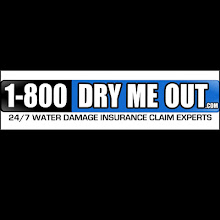You may have heard people uttering the phrase, “Oh, it’s La Niña…” in relation to the anticipated hurricane season ahead of us. So, the gang at Advanced Restoration decided to do some research and get to the bottom of this utterance.
According to sources, La Niña, which is part of the El Niño/Southern Oscillation (ENSO), might have something to do with a possibly busy hurricane season. ENSO consists of two extreme climate pattern stages: El Niño and La Nina. The ENSO system oscillates between stages every 3 to 4 years. Though El Niño will be consistently be present, it may not always be followed by a La Nina stage, rather, a normal neutral stage. What happens to create an extreme change relies on the interplay between changes in the ocean surface temperature and atmospheric conditions in the Tropical Pacific. During El Niño, water surface temperatures are significantly warmer while during a La Niña phase, Pacific surface water temperatures are cooler and winds are strengthened.
So how does La Niña affect the possibilities of hurricane activity in the Atlantic? According to the foremost expert on the subject, Dr. William Gray from Colorado State University, “the chances for the continental U.S. and the Caribbean Islands to experience hurricane activity increases substantially during La Niña.” While there are several factors that favor hurricane development, uniform atmospheric winds are one of the ingredients. Although La Niña produces wind departures at upper levels of the atmosphere in the Pacific, once in the West, the wind departures are at low levels. Thus, there tends to be more hurricane activity in the Atlantic during La Niña due to low wind shear. In contrast, El Niño produces the reverse effect and tends to create more hurricane activity in the Pacific.
“El Niño and La Niña also influence where the Atlantic hurricanes form. During El Niño fewer hurricanes and major hurricanes develop in the deep Tropics from African easterly waves. During La Niña more hurricanes form in the deep Tropics from African easterly waves. These systems have a much greater likelihood of becoming major hurricanes, and of eventually threatening the U.S. and Caribbean Islands.”
An interesting side note: Winters tend to be warmer in the Southern US during a La Niño year and cooler and possible extreme in the North (vice versa during an El Niño phase). La Nina and El Niño typically last about a year, though both can last up to two years during a phase.
For further study, here are two great websites:
http://www.cpc.noaa.gov/products/analysis_monitoring/ensostuff/ensofaq.shtml
http://www.elnino.noaa.gov/
And as always, for more information, please visit us for more Hurricane and Water Damage articles.
The Gang at Advanced Restoration
1-800-DRY-ME-OUT
Advanced Restoration, Inc. is a Water Damage, Mold Damage, Hurricane Damage, Sewer Damage and Emergency Disaster Recovery Restoration Company in Tampa Bay, Florida. Company Services Include: WATER DAMAGE EXTRACTION and RESTORATION; MOLD REMOVAL and MOLD REMEDIATION; STORM DAMAGE RESTORATION; FLOODS; HURRICANE DAMAGE; SEWER DAMAGE; Complete Restoration Services. Residential, Commercial & Industrial structures in the Tampa Bay Metro Area, Sarasota County, FL, Manatee County, FL. 1-800-DRY-ME-OUT Contact Us for Water Damage Tampa!
skip to main |
skip to sidebar

Labels
- fire damage (2)
- Christmas tree (1)
- Clearwater Thrashers (1)
- EPA RRP (1)
- El Nino (1)
- Justin Lawrence (1)
- La Nina (1)
- Pitch for Pink Strikes Out Breast Cancer (1)
- Pitch for pink (1)
- Water Damage Spring Hill (1)
- Water damage restoration Spring Hill (1)
- advanced restoration (1)
- athlete (1)
- carpet drying (1)
- christmas tree fire (1)
- fire (1)
- fire prevention (1)
- fire safety (1)
- hurricane damage (1)
- hurricane flooding (1)
- hurricanes (1)
- lead certification (1)
- lead certified (1)
- lead damage (1)
- lead toxocity (1)
- mildew (1)
- mold (1)
- mold remediation (1)
- removal (1)
- sewer cleanup (1)
- sinkhole restoration (1)
- softball (1)
- softball athlete (1)
- water damage (1)
- water damage restoration (1)
- water damage restoration company that provides emergency water removal (1)
- water mitigation (1)
- water removal tampa (1)
About Me

- 1-800-DRY-ME-OUT
- At 1-800-DRY-ME-OUT, we pride ourselves on restoring your home quickly, efficiently and always to better than new condition. 1-800-DRY-ME-OUT is a full service water damage restoration company that provides emergency water removal, water mitigation, carpet drying, mold remediation, fire damage, sinkhole and sewer cleanup services. 1-800-DRY-ME-OUT is located in Port Richey, Florida, and proudly services the West Gulf Coast of Florida. For more information, please visit http://www.drymeout.com
